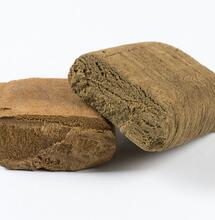Afghani

Certain varieties of Cannabis paved the way for the modern industries of hybridized strains and indoor buds. In this series, we explore the origins of such trailblazers and discover where they have led.
Certain varieties of Cannabis paved the way for the modern industries of hybridized strains and indoor buds. In this series, we explore the origins of such trailblazers and discover where they have led.
Certain varieties of Cannabis paved the way for the modern industries of hybridized strains and indoor buds. In this series, we explore the origins of such trailblazers and discover where they have led.
Back in 1979, two companies forever changed the Cannabis industry by stabilizing cultivars – landrace varieties that were carefully selected by indigenous populations for various reasons, over decades or centuries – and hybridizing them for personal and commercial production. Sacred Seeds was established in California and the Lowland Seed Co. was founded in the Netherlands; these were the first two Cannabis seed companies in the world. Sacred Seeds released the Skunk No. 1, Afghani No. 1, Hindu Kush and Original Haze in 1980, which effectively made the modern industry possible – nearly everything that you grow or smoke these days contains at least a trace of such genetics. For decades, these four had been meticulously protected and maintained by the Flying Dutchmen seed bank under the names Skunk #1, Afghanica, Pot of Gold and Original Haze.
Wide, dark-green finger leaves can be indicative of Afghan genetics
Genotype and Phenotype
Indicas originated in Central Asia, with a similar phenotype but varying genotypes, resulting in flavours ranging from sweet and fruity to spicy, earthy, ‘hashy’ or even pine. The Afghan selection proved to be an indica-lover’s dream. Hailing, unsurprisingly, from Afghanistan, these bushy, dark-green plants produce long, dense colas and incredibly wide, dark-green palmate leaves. Some growers have noted that the leaf sets are larger than their own heads – especially when grown outdoors.
Skunk #1 is a famous, pioneering strain with a sturdy Afghan father
An advantage of strains containing landrace or cultivar Afghani genetics is that the hybridized versions can usually be grown either indoors or outdoors. Afghan genes tend to shorten the overall flowering period, when combined with sativa or haze genetics – especially if the father of the cross is the Afghani stock. Yields will increase and the plant will be slightly easier to grow, taking on the Afghan phenotype. However, if left to their own devices while growing wild or outdoors, these plants will reach several metres in height.
During the recent war in Afghanistan, it was reported that American troops had cornered some insurgents whom had hidden amongst the wild (or perhaps locally-cultivated) Cannabis plants. The Afghan weed plants were so dense, hardy and close together that the soldiers had been ordered to use white phosphorus to flush out the rebels, as they were unreachable in the rough cover; however, the incendiary materials were hardly able to make a dent in the sturdy Afghan Cannabis cover.
| Super Skunk was back-crossed to introduce even more Afghan genes |
Indoors, Afghan genetics are easily trained and may be maintained as short, bushy plants that can easily fit under an attic eave or a basement stairwell. In addition to the relaxing sedation or body effect imparted by such strains, the sweet, ‘hashy’ flavour has become legendary – perfect for indica lovers or those who crave the old Nepali hash taste.
Afghanica was one of the few true and stable incarnations of these genetics, created by crossing a hand-chosen Afghani landrace mother with a solid Skunk #1 father, and selecting the offspring from around ten-thousand resulting progeny in order to stabilize the variety. By using the powerful indica as the mother plant, the famous sweet, almost ‘greasy’ Afghan flavour was allowed to shine through, as was its sedating body effect. The Skunk #1 father pumped up the resulting yield and helped to maintain a short indoor flowering period of eight weeks. This was the closest anyone could get to pure Afghani genetics without personally travelling to Afghanistan!
Skunk #1 is often considered the first commercial hybrid (although it is a true-bred strain) and was amongst those first four truly legendary varieties that were not simply ditch weed or foreign brick weed – this meant that seeds could also be grown indoors, under lights, which revolutionised the pot growing and smoking scene. Colombian and Mexican sativas were carefully crossed with a hardy, feisty Afghan father – in fact, most of the original Flying Dutchmen varieties contain Afghan genetics, usually as the male part of the cross – which shortened the flowering period and enhanced the yield. The sativa high was maintained, combined with that soothing, stony Afghan effect, and the latter improved the ‘cat piss’ flavour and scent of said sativas. The strain was selected from a greenhouse of twenty-thousand plants, and Skunk #1 was born – this is why folks in the United Kingdom often mistakenly refer to any indoor-grown Cannabis as ‘Skunk’.
Other notable varieties containing Afghan genes are Super Skunk, which was back-crossed with an Afghan father, the legendary Flo, AK-47 (‘Afghan-Kush’), the eponymous Northern Lights, Twilight and S.A.G.E. (‘Sativa-Afghan Genetic Equilibrium’; Big Sur Holy x Afghan) – to name a few.



